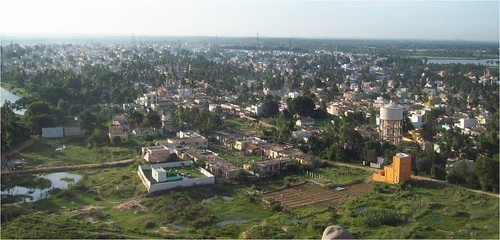Biological Pollution
The Bhilai Steel Plant, a symbol of modern India, is running out of iron ore
Posted on 06 Jul, 2013 09:31 AMFor the last 50 years, the Bhilai Steel Plant, which is India's largest integrated steel plant has got its supply of iron ore from Dalli Rajhara's mines. Dalli Rajhara, a municipality which is also an industrial city is located 90km south of Durg in Chhattisgarh. It is a part of the Rajhara group of mines. Iron ore mined in this area are of two types - hematite and magnetite.

Everything you need to know about water purifiers
Posted on 01 Jul, 2013 11:00 AMPure, clean and safe drinking water isn’t available easily these days. Growing population, industrial development and environmental degradation are all causes for this. Given this situation, it becomes even more important for us to be aware of purification techniques and the available water purifiers in the market to ensure that our drinking water is of good quality.

Rain rain go away, our cities can't keep the water at bay!
Posted on 17 Jun, 2013 06:32 PMBreaking news! The monsoon is here! It hit Kerala on June 1 and with that put an end to newspapers stories on drought in India highlighted by pictures of farmers standing on cracked earth and staring up at the sunny skies. However, very soon there will be Page-1 picture spreads of water-logged cities with traffic jams and harried people titled "The city is drowning"!

Delhi’s ground water hits rock bottom
Posted on 20 May, 2013 12:40 PMGreen pastures and meadows, tall trees, lakes, wells and the river…those are my memories of Delhi. It wasn’t too long ago that one woke up early to the sounds of lawns being watered, children running off to school and people walking in the parks. A flurry of activity but quite different from what it is today.

River water quality data by Central Pollution Control Board (2005)
Posted on 19 Mar, 2013 06:41 PMAgainst this backdrop, this document by the Central Pollution Control Board (CPCB) elaborates on the river water quality in India. The Central and State Pollution Control Boards / Pollution Control Committees in Union-Territories of India are responsible for restoration and maintenance of the wholesomeness of aquatic resources.
Engineer, activist, Mahant, 'Hero of the Planet' Veer Bhadra Mishra is no more
Posted on 14 Mar, 2013 11:17 AM
Manuals for preparation of detailed project report for rural piped water supply schemes by Ministry of Drinking Water and Sanitation
Posted on 08 Mar, 2013 05:33 PMThe works have to done maintaining appropriate standards and quality of the schemes, and ensure their completion in time. The manuals are prepared keeping in mind the activities mentioned in the 12th five year plan.
Uniform drinking water quality monitoring protocol- A document by Ministry of Drinking Water and Sanitation (2013)
Posted on 07 Mar, 2013 08:36 PMThese protocols are suggestive in nature and will be useful for laboratory personnel, water supply engineers and policy makers working in the drinking water sector operating at State, District and Sub-district levels.
Influence of anthropogenic contamination on fluoride concentration in groundwater: A study of Mulbagal town, Kolar district, Karnataka
Posted on 15 Feb, 2013 04:53 PMGroundwater contamination is a serious, but relatively ignored issue in the country. This contamination occurs in either through geogenic or anthropogenic means. Fluoride contamination is one such example of geogenic contamination that is widely found in the Kolar district of Karnataka. However, the fluoride levels in the town of Mulbagal are lower than those in the surroundings. Earlier, a study was conducted on the impact of pit toilets on the groundwater in the area. The present paper investigates the presence of any link between these two phenomena.
Impact of pit-toilet leachate on groundwater chemistry and role of vadose zone in removal of nitrate and E. coli pollutants in Kolar District, Karnataka, India
Posted on 04 Jan, 2013 02:00 PMGiven the many problems associated with flush toilets and the sewerage system, pit toilets offer a viable solution in India. However, the use of soakpits raises the question of groundwater contamination. This paper assesses the impact of pit toilet leachate on groundwater quality in Mulbagal town (pop ~ 60,000) in Karnataka relies on pit toilets, and uses groundwater for drinking.





